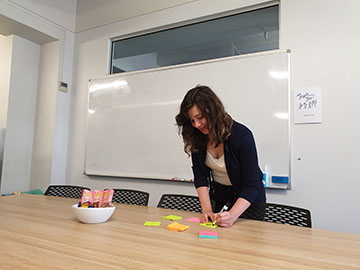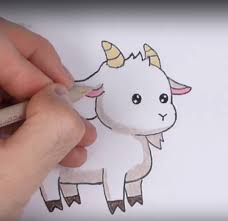What on earth does a Scrum Master do?

Siobhan Flynn’s enthusiasm for scrum mastery is evident the minute she starts to talk about it, yet it was not the career path she intended to take after completing her Bachelor of Computer and Information Science in software development at AUT.
“I loved computers and I loved technology, so I was always going to be a programmer. But when I did the Agile rotation of Mercury’s graduate programme I fell in love with scrum mastery and the Agile way of working. I thought this is the way work should be done. We should be open, communicating, collaborating constantly and making work visual. It really aligned with my own personal beliefs on how to work.”
So much so, Siobhan left the rotation programme and immediately started scrum mastery training. She then worked in a permanent role at Mercury as a scrum master for a year before moving into her current role as a scrum master for management consultancy Radically.
What does a scrum master do?
We think of our role as being a mentor, coach and facilitator, w hich is quite different from traditional management, says Siobhan.
hich is quite different from traditional management, says Siobhan.
“I stay in the background making sure everything is running smoothly; I keep the car well-oiled so the team can zoom on through. This includes helping teams work through conflicts, so they stay unified and collaborative. But I don’t have any power over the team. It is about guiding them to make their own decisions and they own the outcome.”
Simply put, in context of business or product development a scrum is a framework used to create an Agile environment of collaboration and ongoing delivery between the team and the customer.
Siobhan gives the example of working with a team of developers, testers and other technical people putting together a website.
“I was basically there to run planning sessions – sprint planning sessions – to make sure the team were connected every day, that all the right people were in the room, conversations were focused and they had the correct space to plan efficiently. I also liaised with others outside of the team, to ensure sign off on marketing or keep certain information channels open.”
Sprints and scrums but no rugby field!
Although there is no rugby ball in sight the terminology did originate from rugby. Two Japanese businessmen coined the term ‘scrum’ to emphasise the need for resetting and collaboration and working towards a common goal – but in product development and business, rather than sport.
 Siobhan says talking of daily scrums can be confusing to teams new to agile/scrum principles – but it is simply a daily team get together for 15 minutes to plan the next 24 hours.
Siobhan says talking of daily scrums can be confusing to teams new to agile/scrum principles – but it is simply a daily team get together for 15 minutes to plan the next 24 hours.
“Sometimes it is called ‘daily stand up’ or ‘catch up’ or ‘think’. It is about planning for the next 24 hours so that everyone is on the same page and nothing gets in your way,” says Siobhan.
“An essential part of the scrum master role is to help team members feel part of something bigger than themselves,” she adds. Just like a good rugby team!
“A lot of what we do involves running workshops and meetings for teams to help them keep improving. This includes Sprint Retrospectives at the end of each sprint and gathering after a project has finished to look at what could be done differently next time," says Siobhan.
Combining her skills
Having a software development qualification helps Siobhan a lot in her scrum role.
“I understand the terminology which can be quite complex - it definitely helps with the team discussions.”
Being a social person who likes to have a good chat, she has found her niche in a role that involves people and communication, yet still deals with technology. While she sometimes misses getting behind a screen and focusing on writing code, Siobhan feels this suits her better.
“I do enjoy technical mathematical work but I also really love people and understanding where they’re coming from. I’m lucky to have a finger in both pies.”
Challenges
Taking a coaching approach was hard initially for Siobhan who found her natural instinct was to teach.
“But coaching is about taking a step back, expecting people will have the answer in the heads and steering them into what they already know is true. It is such a difficult skill to learn.”
Facilitation is also an art form, says Siobhan, because you have to learn to “read the room” and under stand the energy of the room as you go.
stand the energy of the room as you go.
One of most challenging workshops Siobhan has run so far was a workshop in the value of feedback with a group of males, all 40 years or older, who had been in IT their entire working life.
To break the ice, she decided to get the participants to draw themselves as animals.
“It didn’t go down too well, so I tried to draw myself and make it all funny and it didn’t really fly!”
They only engaged once she got into the purpose and value of providing each other feedback and how people like to receive feedback in different ways depending on their past experiences and personality types.
“At the end their feedback was that the workshop was fine once got going but definitely to axe that intro! Oh, and they liked the donuts!”
Tips to wannabe Scrum Masters
- The best thing to is start going to some of the meet ups. The Agile community has activities happening all the time, so join a couple of slack channels, find meetup.com events
- A lot of activities are free and everyone is very welcoming because we really want people to come in and learn about what we do.
- Networking is your friend, particularly in Auckland, and meetups are a great way to network.
- Make sure your LinkedIn profile is up to date, turn up to things, keep communication open and doors will open for you.
- You can be a certified scrum master in two days (scummaster.org) but the real learning comes from being mentored and facilitating a workshop. Find a mentor and a great work place that will support you.
Find out more about software development here
2023 Update
Siobhan is now Agile Coach at Teamworkz.
CVs/Cover letters
- 7 Tips on creating a great CV
- Personal Statement? Career Objective? What?
- Why bother with LinkedIn?
- Why bother to write a cover letter?
Job search skills
Career advice
- Bringing passion into the mix
- Don't let rejection end your dream
- Employability Skills - how to figure them out!